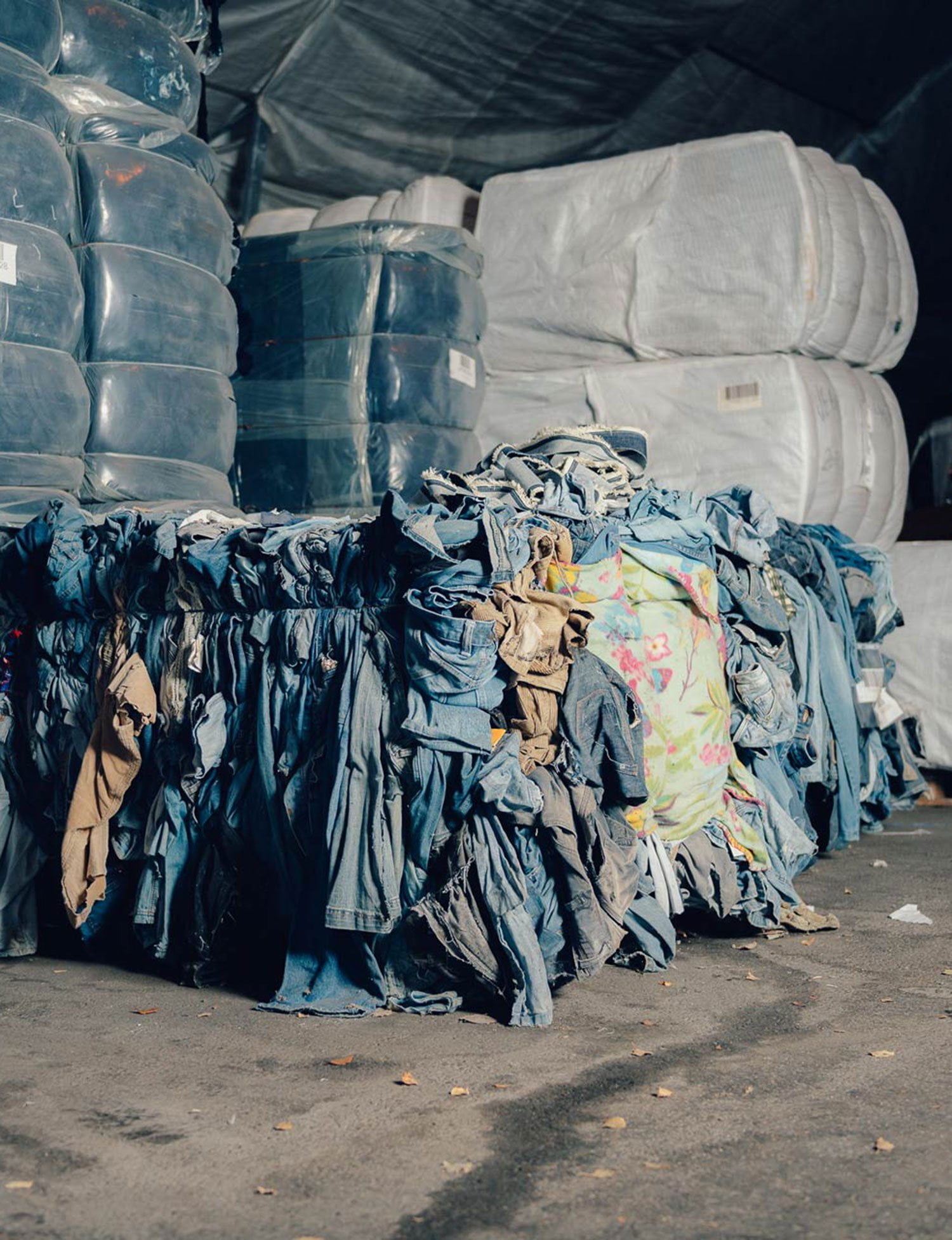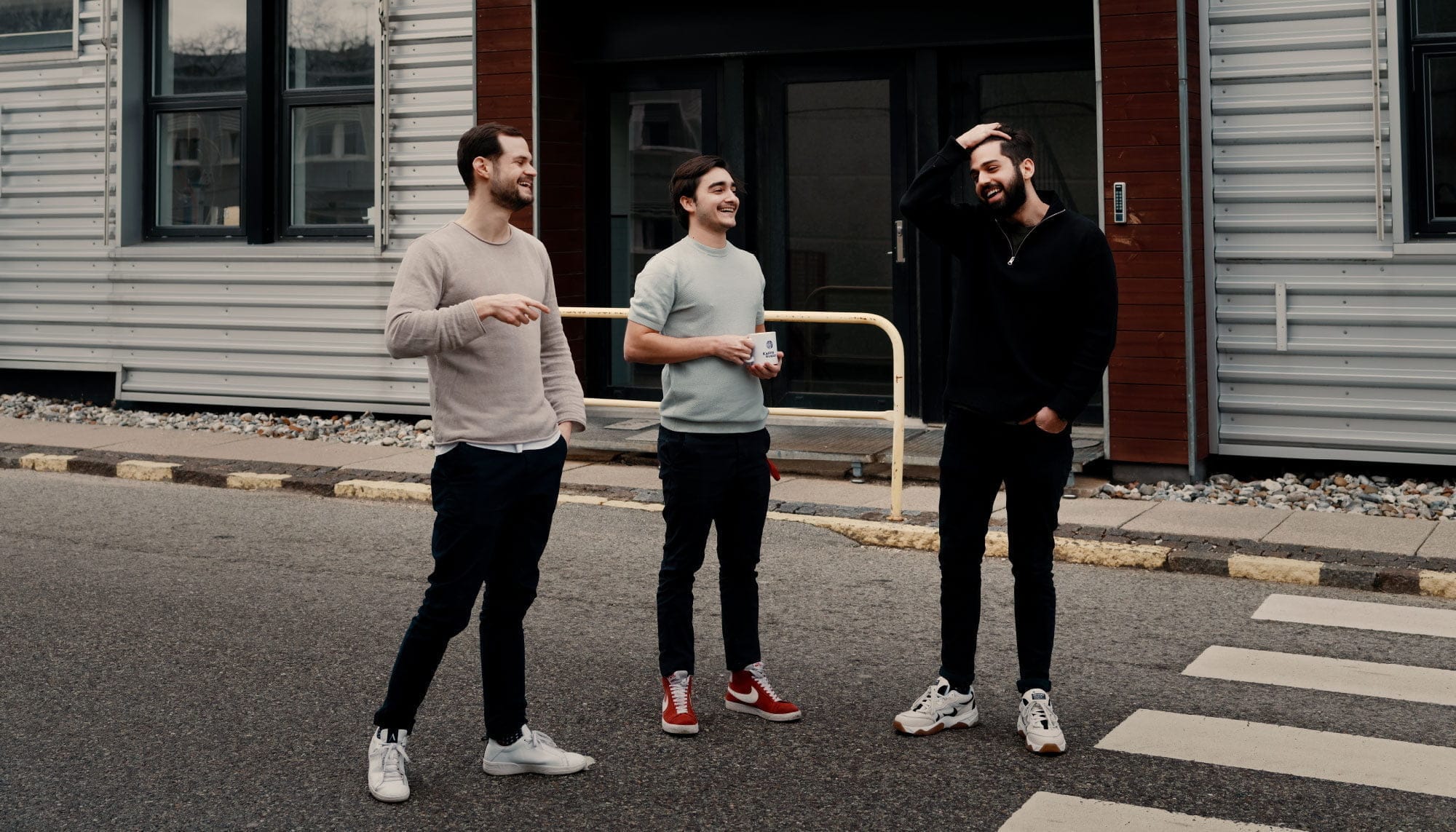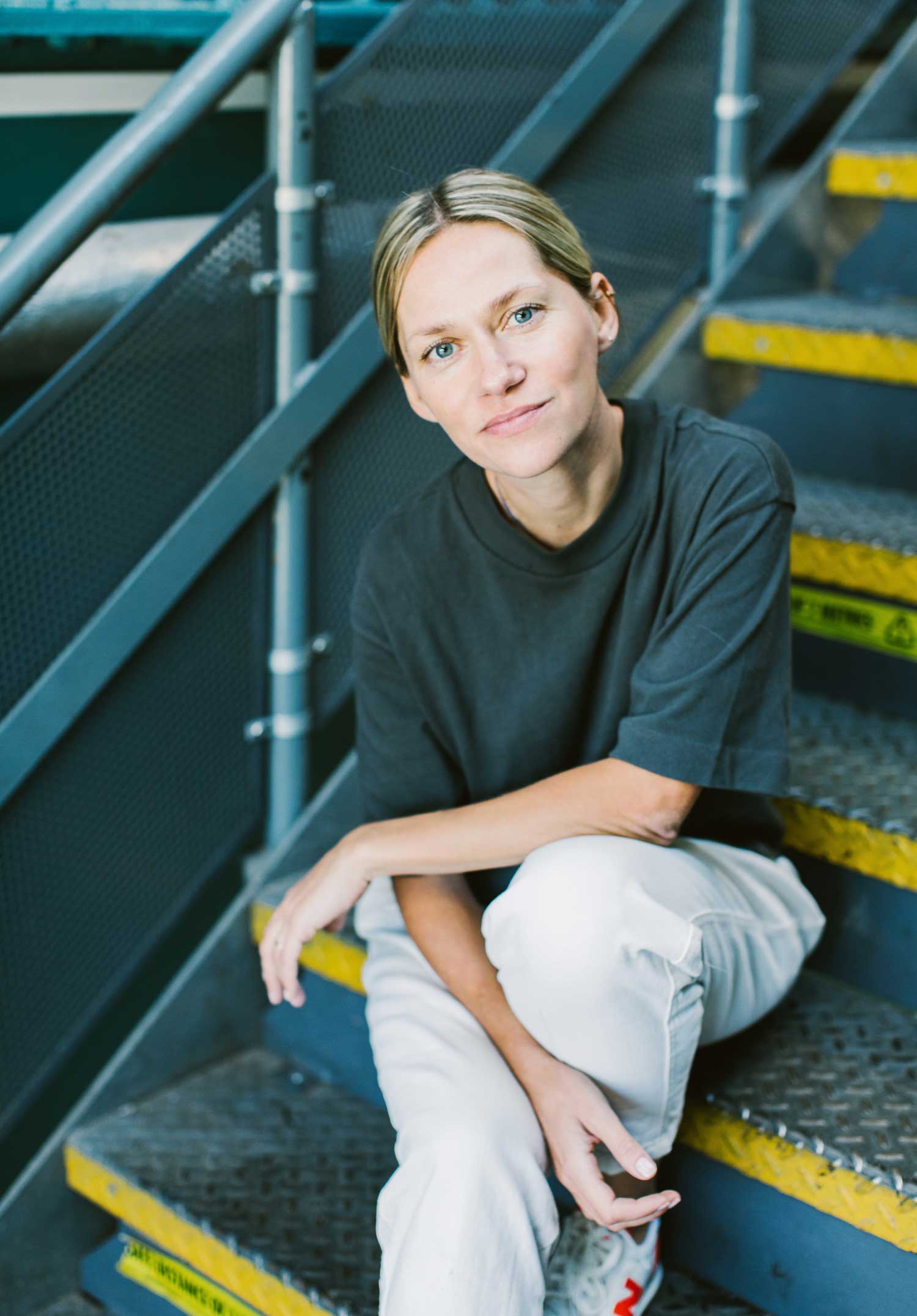A next-generation recycled material may hold the key to making fashion less wasteful and more planet-friendly. 5 spoke to the people behind it.
Last spring a €130 dress from H&M became the first garment to be produced from a novel material that is both old and new at the same time.
The long, midnight blue dress with a ruffled V-neck is made from 50% viscose, which comes from wood, and 50% Circulose, which comes from used clothes.
Produced by Swedish firm Renewcell, Circulose was named by Time magazine as one of the best inventions of 2020, and with big brands beginning to embrace it, its makers hope that it can help reduce the huge environmental impact of the clothes we wear.
Growing cotton uses up vast amounts of water, land and pesticides, and once the clothes have been worn, most are thrown away, creating millions of tons of waste. Even those that are recycled are mostly turned into lower-value materials such as stuffing for furniture.
Circulose is different because it dissolves scraps of cotton into the same kind of pulp that is used to make new fabric – except that it doesn’t use any virgin resources to produce. That means no fields, irrigation, pesticides, fertilisers, trees, oil or microplastics. The entire process is powered by renewable energy, and the makers of Circulose say that unlike other recycled fabrics, it can be recycled again (and again) at the end of its life, without losing quality.
“The big brands are the ones that have the clout to shift the behaviour of all the thousands of middlemen between us and the consumer”
Harald Cavalli-Björkman, Renewcell
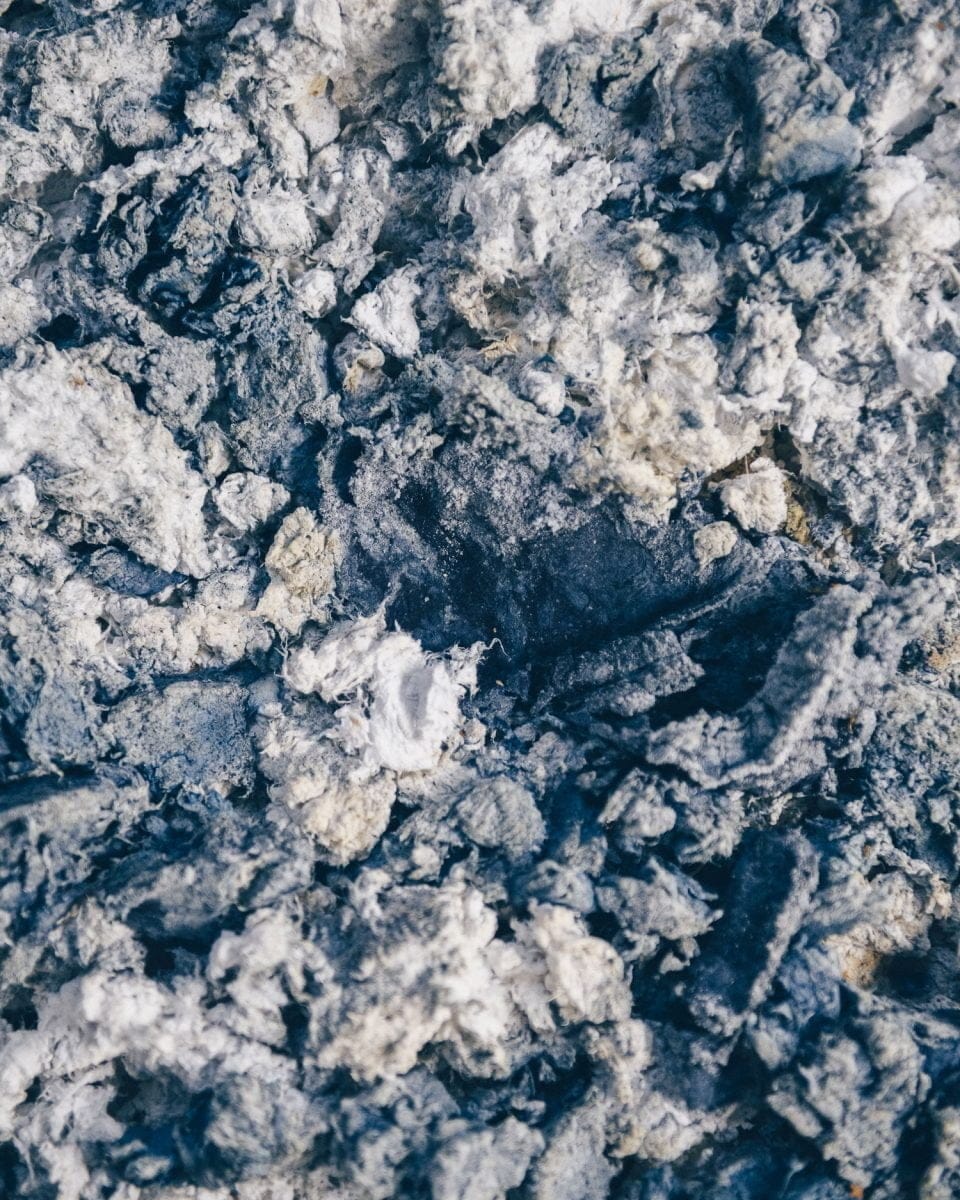
A study conducted on behalf of Stella McCartney in 2017 even concluded that the production of Circulose itself (not including the production of garments based on it) can have a net positive impact on the climate, because the carbon already embodied in the old clothes stays in the new fabric – rather than ending up as pollution in the atmosphere due to being burned or decomposing in landfill.
To make Circulose, used cotton items like denim and fabric off-cuts are shredded, bleached and crushed until all that remains is cellulose, the tough substance that plants are made of. This pulp is dried into sheets and delivered to manufacturers where it’s spun into a fibre and made into clothes – just like new fibres.
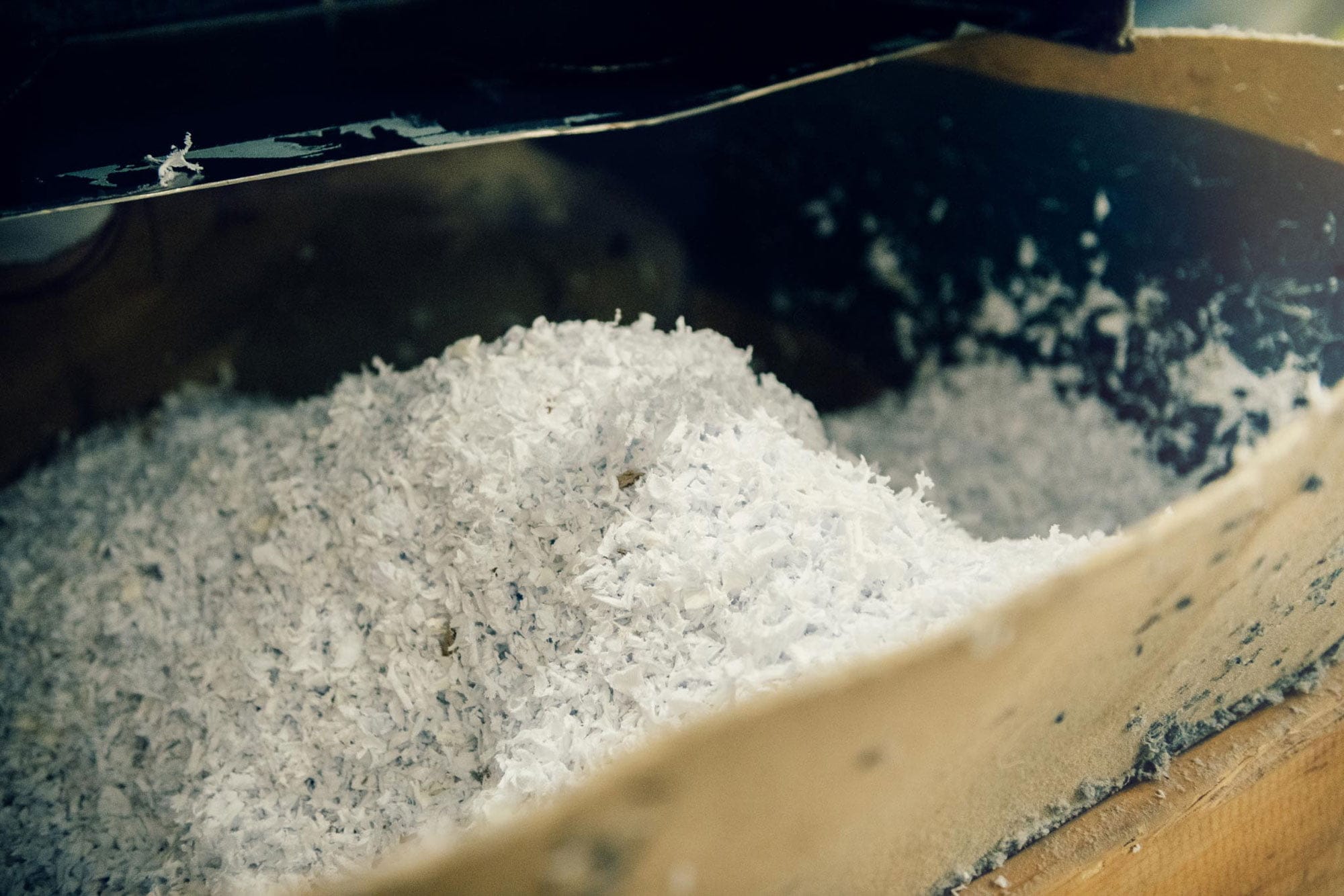
Big brands are going circular
Renewcell wants Circulose to be much more than just a niche eco product for niche eco brands. It wants the fabric to go mainstream. Already the company has signed a deal with fast-fashion giant H&M to supply thousands of tons of Circulose over the next five years, and other well-known brands are getting on board to make new stuff from old stuff. In July 2020, Levi’s released its “most sustainable Levi’s ever”, made from Circulose and organic cotton. Levi’s also made sure the jeans would be easy to recycle again, choosing trims and thread that meet recycling specifications. Swedish retailer KappAhl and Danish fashion chain Bestseller are among others that have done deals with Renewcell.
All these companies have bigger sustainability problems than just their use of virgin materials, and switching to a new kind of textile won’t be enough to end the criticism that they face for their impact on people and planet. But the possibility of producing clothes without using up new resources is potentially a powerful part of the solution – and the way Renewcell sees it, the more big brands get involved, the bigger the opportunity.

The first Circulose garment: a dress from H&M
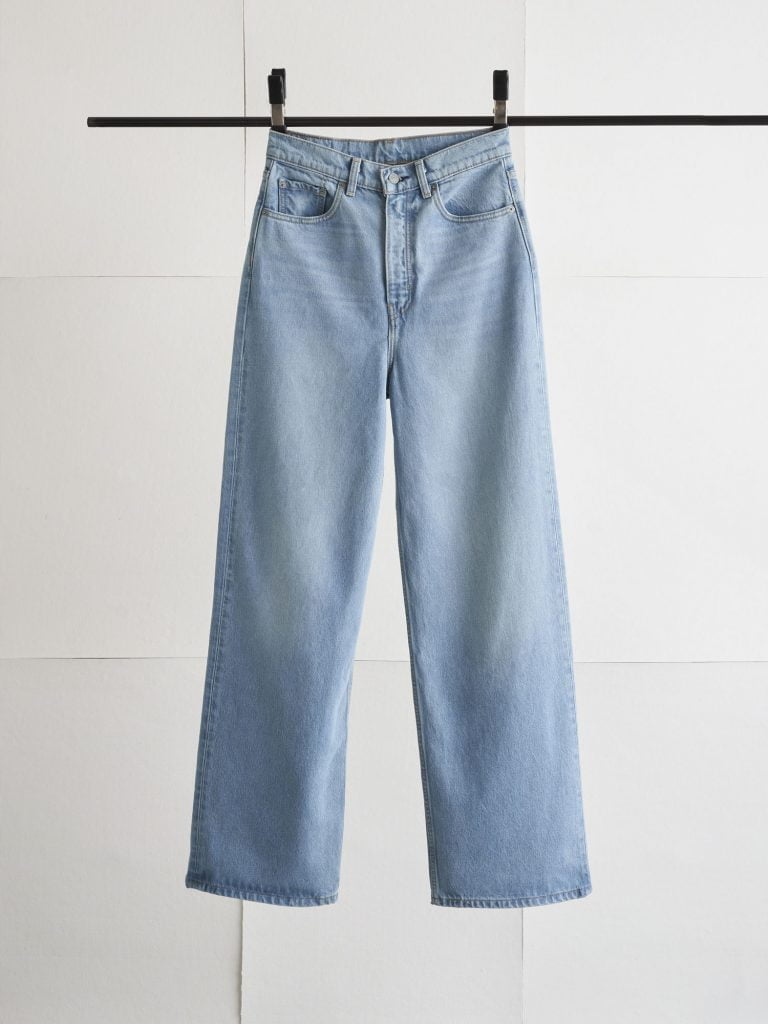
Jeans made out of jeans: the first Levi’s with Circulose.
“The velocity at which we tear through raw materials and natural resources has to change,” says Harald Cavalli-Björkman, who leads marketing and investor relations at Renewcell. “Not only do we need to handle the existing impact that fashion has on the planet, but we need to accommodate the growth in prosperity that’s unfolding. It’s important we shift to circular materials and scale up technology so that people joining the global middle class, along with the ones already there, can enjoy that prosperity without wrecking the conditions for life on this planet.”
“There are great innovations coming out everyday, but if they’re not scaled, there’s no impact,” says Cavalli-Björkman. “The big brands are the ones that have the clout to shift the behaviour of all the thousands of middlemen between us and the consumer who wants this type of material.”
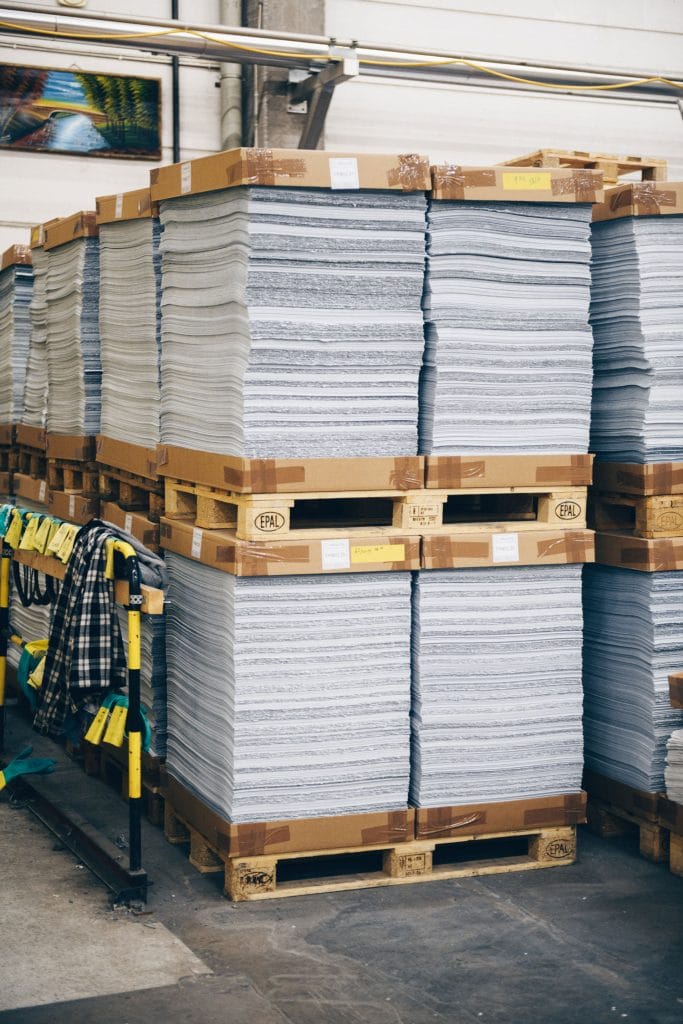
To textile makers, sheets of Circulose are much like the sheets of ‘virgin’ materials they use to make other fabrics.

Renewcell’s plant in Sundsvall on the east coast of Sweden was once a paper mill.
Circulose is getting set to scale up
In the city of Sundsvall, at the heart of Sweden’s paper industry, the scale of the transition to circular materials is clear to see. Here, Renewcell has taken over the site of an old paper mill, which closed due to falling demand. It’s now being turned into a new Circulose plant with more than ten times the capacity of Renewcell’s current facility, and the company is hiring staff from the pool of people let go from the mill. The plant will run on 100% green energy – including hydropower from the nearby river.
Harald says: “We’re applying circular thinking to competencies, infrastructure, machinery, people and putting knowledge of the Swedish pulp industry back in the loop. Circulose also drops into the existing value chain. The weavers, yarn spinners and fabric producers don’t need to change anything, it’s not a new fibre they have to adapt to.”
“This is an evolution of the value chain, not a revolution.”
Want to do your part? Here’s how
- Always read the labelDid you know that every year, 200 million trees disappear into viscose and rayon fabrics? Or that polyester is made with fossil fuels and takes hundreds of years to break down? As fashion brands use words like conscious and eco-friendly more frequently, we need to educate ourselves on what the real cost of materials are. Read your labels and look for certifications from the Forest Stewardship Council (for viscose) or Global Organic Textile Standard (for cotton and wool).
- Think before you clickWhen we interviewed Harald Cavalli-Björkman, he was wearing a black T-shirt he’d bought from a vintage store earlier that week. Check out the Buyerarchy of Needs, created by Canadian illustrator Sarah Lazarovic and check in with your consumption habits before clicking for a dopamine hit.
- Invest in what you valueIt’s easier than ever to invest in businesses you believe in. Find the companies whose values match your own and start supporting them – many, like Renewcell, are publicly listed so anyone can buy shares, and there’s a variety of apps and tools you can use to make investing easier.
- 30 is the magic numberFast fashion activist and founder of Eco Age, Livia Firth, (the woman who asked all the right questions of H&M in the documentary The True Cost) suggests asking yourself: “Will I wear this 30 times?” If the answer is yes, go ahead and buy it.
- Do more researchThe Good on You app examines brands’ efforts to become more ethical and rates them out of five, with plenty of background detail on how the ratings are chosen. Take a look to discover which brands really back up their words with actions, and decide for yourself who deserves your money.
The business of making the world better
